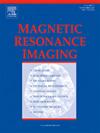Investigating microbleeds and white matter hyperintensities in TBI at a tract-level: A DTI study
IF 2
4区 医学
Q2 RADIOLOGY, NUCLEAR MEDICINE & MEDICAL IMAGING
引用次数: 0
Abstract
Objectives
This study aimed to determine whether focal MRI lesions such as microbleeds (MBs) and focal white matter hyperintensities (FWMHs) serve as reliable and specific markers for tract-level white matter injury in traumatic brain injury (TBI).
Materials & methods
Twenty-two patients with moderate-to-severe TBI and 22 age-matched healthy controls underwent MRI on a 3 T Siemens Prisma scanner. Imaging included susceptibility-weighted imaging (SWI), fluid-attenuated inversion recovery (FLAIR), and diffusion tensor imaging (DTI). Focal lesions were manually identified on SWI and FLAIR and mapped onto tractography reconstructions. Diffusion metrics—fractional anisotropy (FA), mean diffusivity (MD), axial diffusivity (AD), and radial diffusivity (RD) were compared between lesion-affected tracts, contralateral normal-appearing white matter (NAWM), and corresponding control tracts. Statistical analyses were performed using repeated measures ANOVA with Greenhouse-Geisser correction and Bonferroni-adjusted post hoc tests for FA. Friedman tests were conducted for MD, AD, and RD, followed by Bonferroni-corrected Wilcoxon post hoc comparisons.
Results
In this study, we identified 27 MBs and 66 FWMHs intersecting white matter tracts. We observed notable differences in diffusion metrics when comparing lesion-affected tracts to healthy controls. In MB-affected tracts, fractional anisotropy (FA) differed significantly (p = 0.002), while mean diffusivity (MD) also showed a significant alteration (p = 0.002), along with radial diffusivity (RD) (p < 0.001). Similarly, in FWMH-affected tracts, significant differences were observed in FA (p < 0.001), MD (p < 0.001), axial diffusivity (AD) (p < 0.001), and RD (p < 0.001). However, we did not find any significant differences between lesion-affected tracts and the contralateral normal-appearing white matter (NAWM).
Conclusion
MBs and FWMHs do not co-localize with axonal injury at the tract level but indicate a global white matter damage.

TBI微出血和白质高信号在神经束水平的研究:一项DTI研究。
目的:本研究旨在确定局灶性MRI病变,如微出血(MBs)和局灶性白质高信号(FWMHs)是否可作为创伤性脑损伤(TBI)中神经束水平白质损伤的可靠和特异性标志物。材料和方法:22例中重度TBI患者和22例年龄匹配的健康对照者在3 T西门子Prisma扫描仪上进行MRI。成像包括磁化率加权成像(SWI)、流体衰减反演恢复(FLAIR)和扩散张量成像(DTI)。在SWI和FLAIR上手动识别局灶性病变,并将其映射到牵道造影重建上。比较病变影响束、对侧正常白质束(NAWM)和相应对照束的扩散指标——分数各向异性(FA)、平均扩散率(MD)、轴向扩散率(AD)和径向扩散率(RD)。统计分析采用重复测量方差分析,采用温室-盖瑟校正和bonferroni校正的FA事后检验。对MD、AD和RD进行Friedman检验,然后进行bonferroni校正的Wilcoxon事后比较。结果:在本研究中,我们鉴定了27个mb和66个fwmh相交于白质束。我们观察到弥散指标的显著差异,当比较病变影响束和健康对照。在mb影响的神经束中,分数各向异性(FA)差异显著(p = 0.002),平均弥漫性(MD)也有显著变化(p = 0.002),径向弥漫性(RD)也有显著变化(p )。结论:mb和fwmh在神经束水平上不与轴突损伤共发,但表明白质损伤的全身性。
本文章由计算机程序翻译,如有差异,请以英文原文为准。
求助全文
约1分钟内获得全文
求助全文
来源期刊

Magnetic resonance imaging
医学-核医学
CiteScore
4.70
自引率
4.00%
发文量
194
审稿时长
83 days
期刊介绍:
Magnetic Resonance Imaging (MRI) is the first international multidisciplinary journal encompassing physical, life, and clinical science investigations as they relate to the development and use of magnetic resonance imaging. MRI is dedicated to both basic research, technological innovation and applications, providing a single forum for communication among radiologists, physicists, chemists, biochemists, biologists, engineers, internists, pathologists, physiologists, computer scientists, and mathematicians.
 求助内容:
求助内容: 应助结果提醒方式:
应助结果提醒方式:


